The 8 pantry organisation rules that professional organisers follow for a clutter-free kitchen
Make the most of your kitchen storage with these pantry organisation rules that will declutter and streamline your space
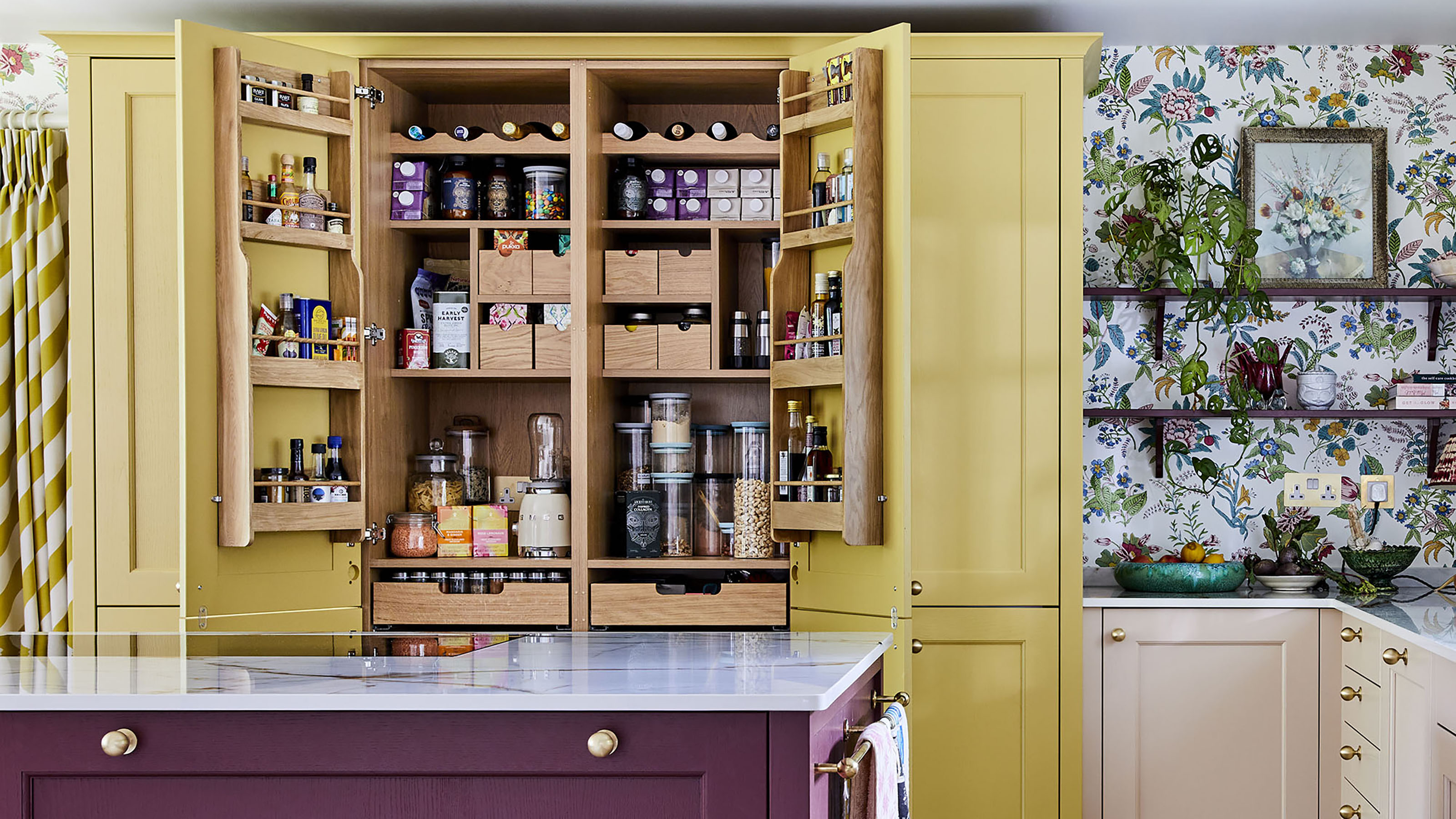
Pantry organisation can be one of the hardest kitchen areas to keep in check. Since we regularly reach for ingredients and restock the essentials, it can quickly become disorganised. Whether it’s crammed with cans, filled to the brim with baking supplies or overflowing with herbs and spices, knowing how to make the most of your pantry space can make finding that food item a whole lot easier.
Organising your pantry will streamline your cooking experience and make your kitchen look quite fancy. But of course, with lots of kitchen ideas out there, the hub of your home should suit your style too - an organised pantry doesn't always mean transparent storage boxes and printed-out labels.
You might have a small kitchen with a tiny pantry, or a large one with a whole cupboard dedicated to dried foods - these kitchen storage ideas will work for most spaces. Even if you only have a kitchen trolley to store your favourite snacks, you’ll find these pantry organisation rules perfect for you and your home.
Pantry organisation rules to follow
With the help of organisation experts and interior designers, we’ve sourced 8 tips to transform your kitchen pantry. From systemising foods according to everyday essentials and extended use, to displaying your tins and arranging your snacks in the most effective way, follow our guide and sort your way to an organised pantry space.
1. Embrace your pantry’s layout
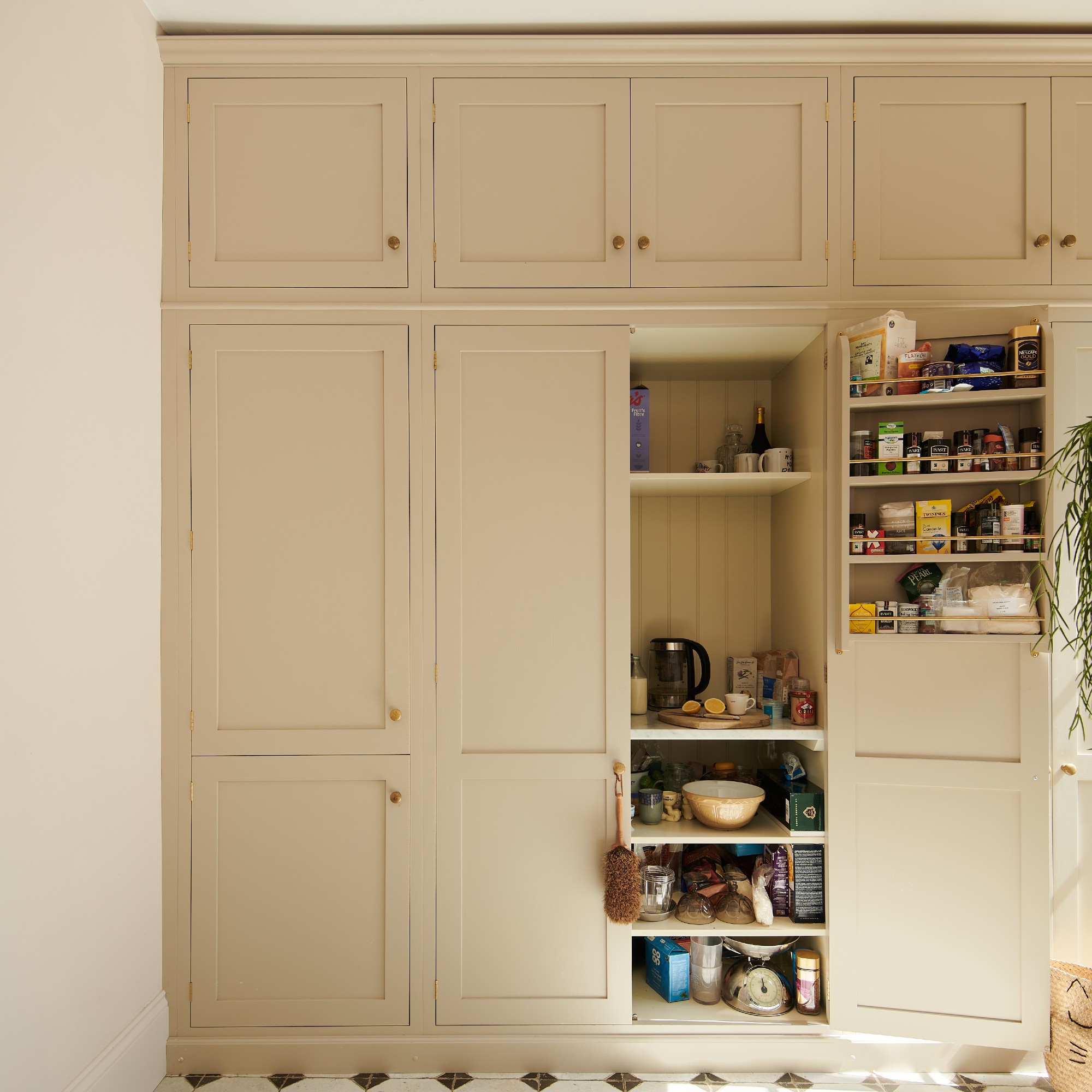
Just like there are plenty of kitchen layout ideas, there are many different types of pantries - and the people who use them.
Ava Wilson, professional organiser at Unclutterer states ‘you should start by understanding your pantry’s layout and your household eating habits. For example, if you’re a busy family that relies on meal prep, you’ll want to organise your space with this in mind, by keeping ready-to-eat snacks and ingredients for quick meals at eye level. This way your pantry works for you, not the other way around.’
2. Declutter
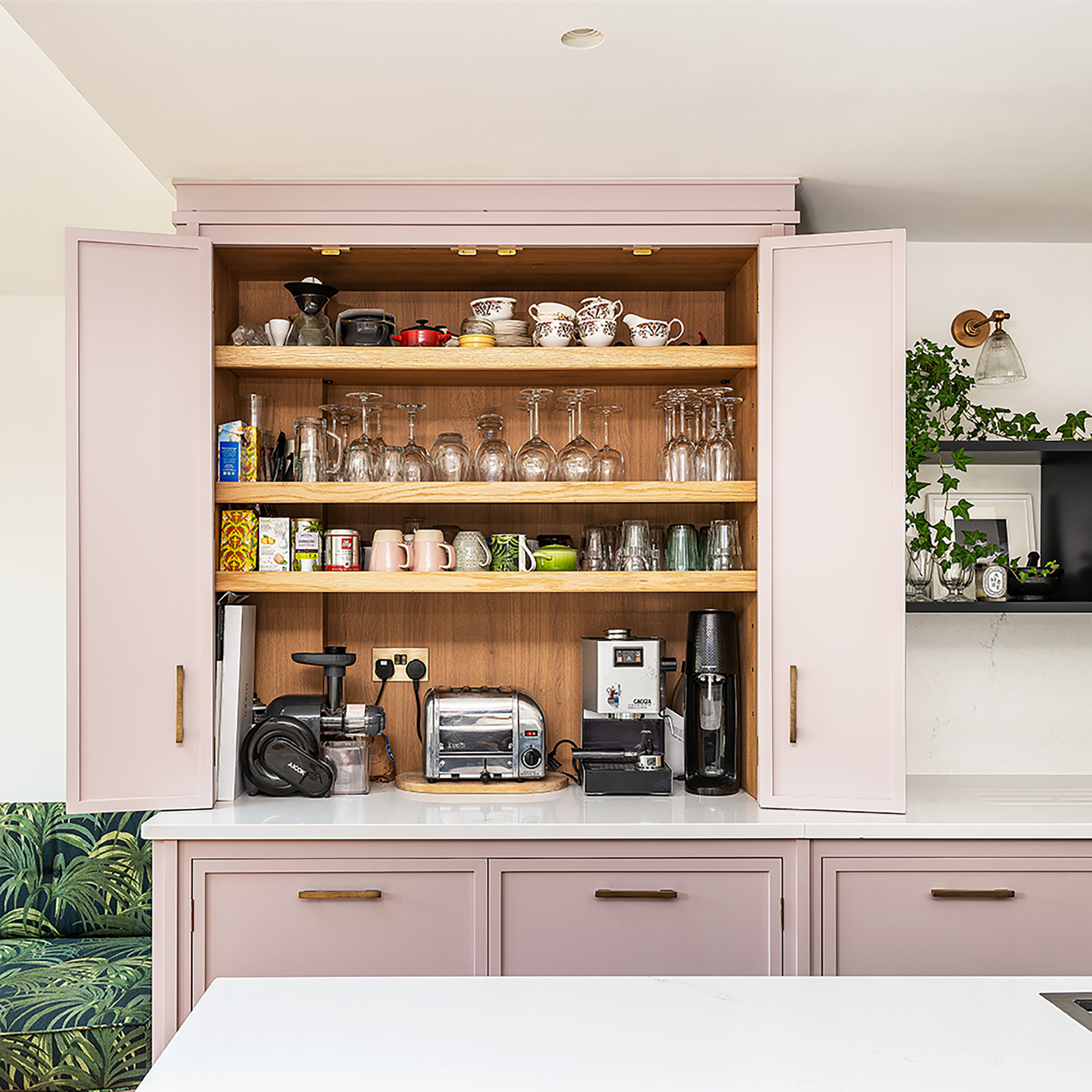
A pantry can become home to out-of-date baking goods and cans you’ve kept for as long as you can remember. Cleaning out your pantry is essential.
Get the Ideal Home Newsletter
Sign up to our newsletter for style and decor inspiration, house makeovers, project advice and more.
To do so, Wilson advises you to ask yourself when you used the item last. ‘If it’s been over six months, it’s best to say goodbye. If it’s something with a long shelf life, like alcohol that you only use for special occasions, check it’s okay before finding a designated space for items you rarely reach for.’ Decluttering your pantry will get reacquainted with what you have and need.
3. Zone out your pantry space
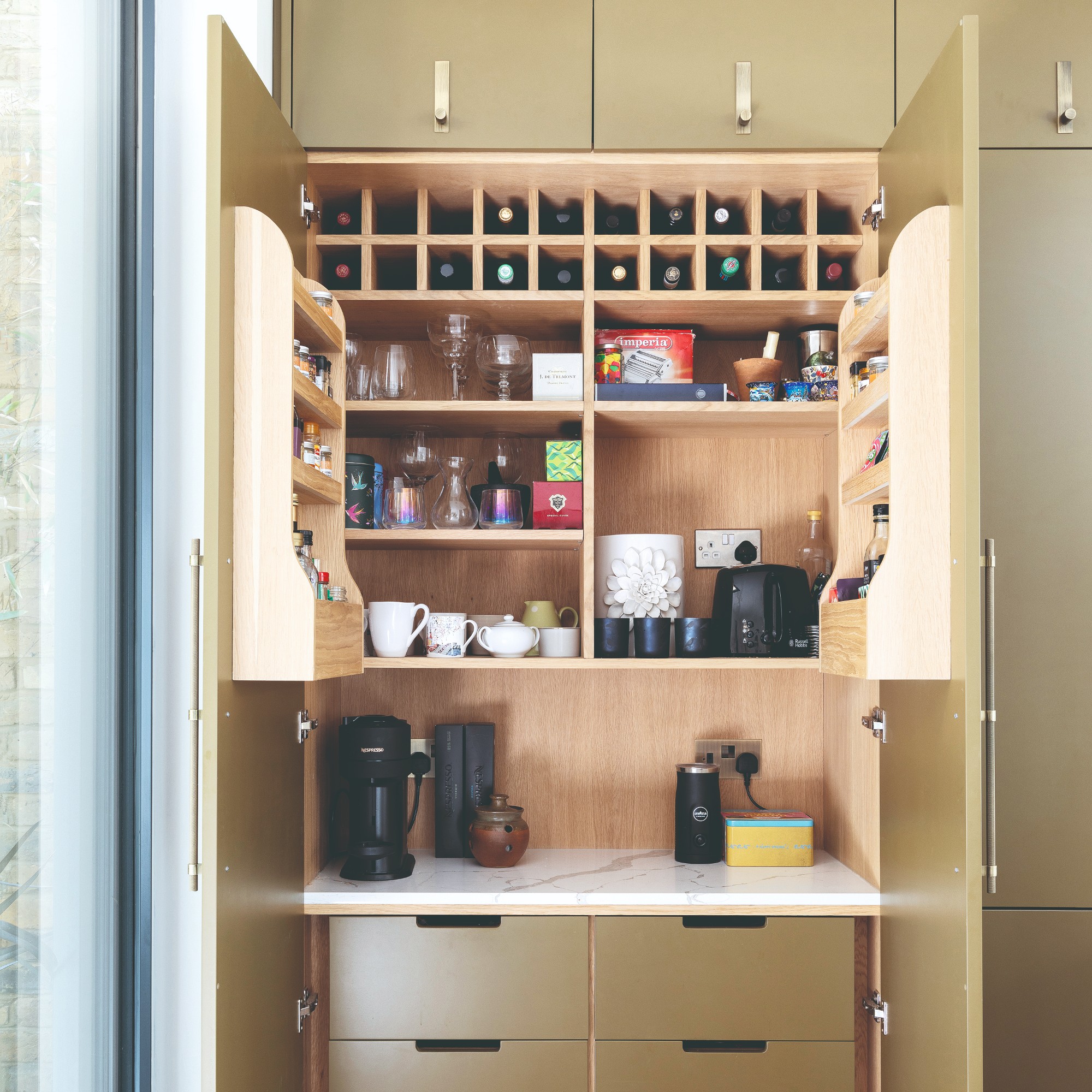
Kitchen pantry ideas need proper planning to function efficiently. Zoning the space should be based on categories like baking supplies, snacks, dried foods, tins, jars and even breakfast items.
This makes your cooking experience much easier, and quicker - since you won’t be searching for that quick snack at the back of the cupboard.
4. Store for how you cook and eat
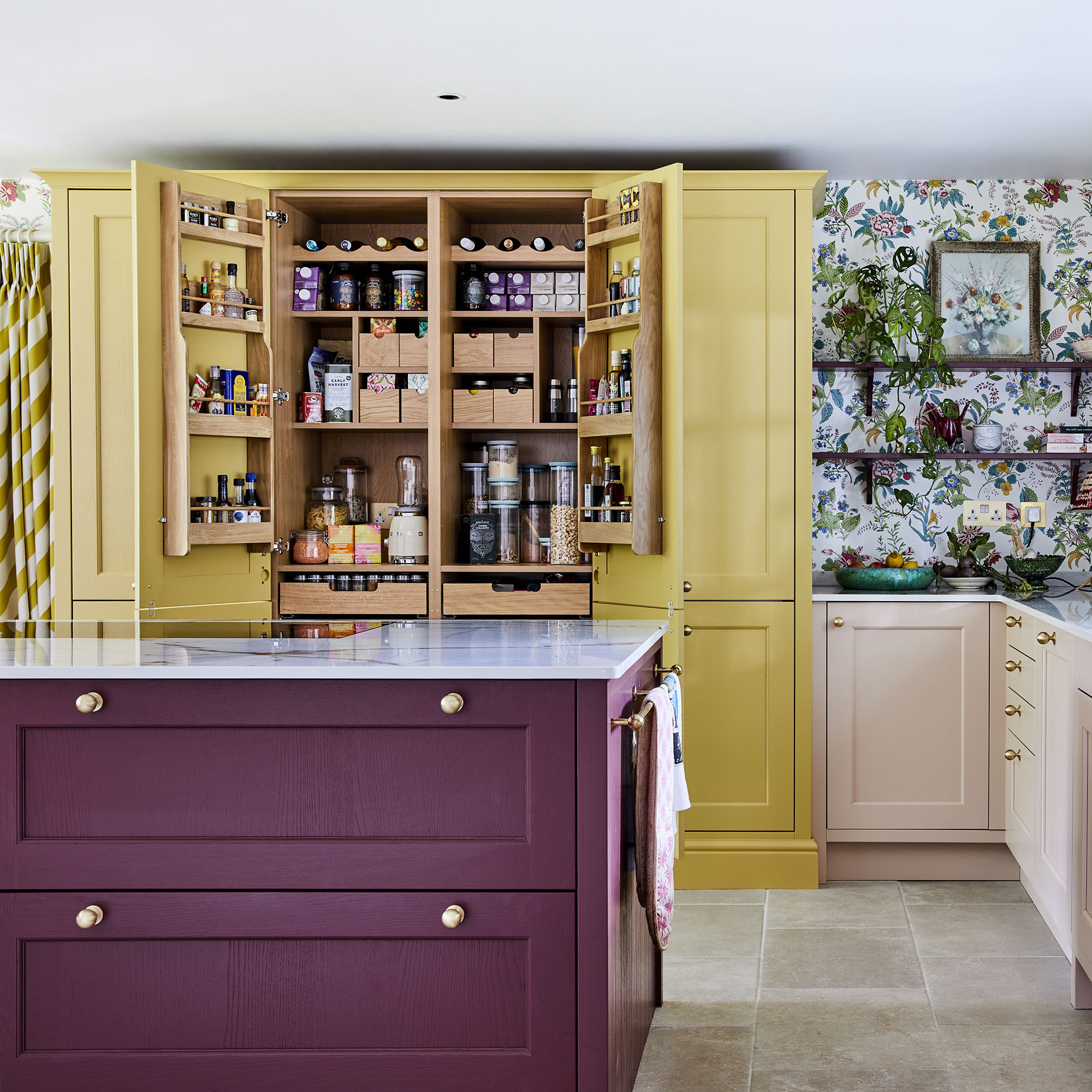
Whether you have a large walk-in pantry space, or a small kitchen cabinet dedicated to dried foods, it should be organised with convenience in mind. The most used food items should be the most accessible. Keep everyday items at arms reach and use higher and lower shelves for less frequently used products.
If you have go-to recipes or like to meal prep Sarah Ross, co-founder of Addison Ross, suggests using transparent storage to keep all your ingredients together. ‘I’ll put passata, garlic and some dried pasta in a lacquer tray so I can bring it straight out into the kitchen and make a speedy meal if I’m in a rush,’ she explains. ‘Grouping food items in these clear containers is an easy and fun way to keep your pantry foods organised.
5. Use containers that suit your space
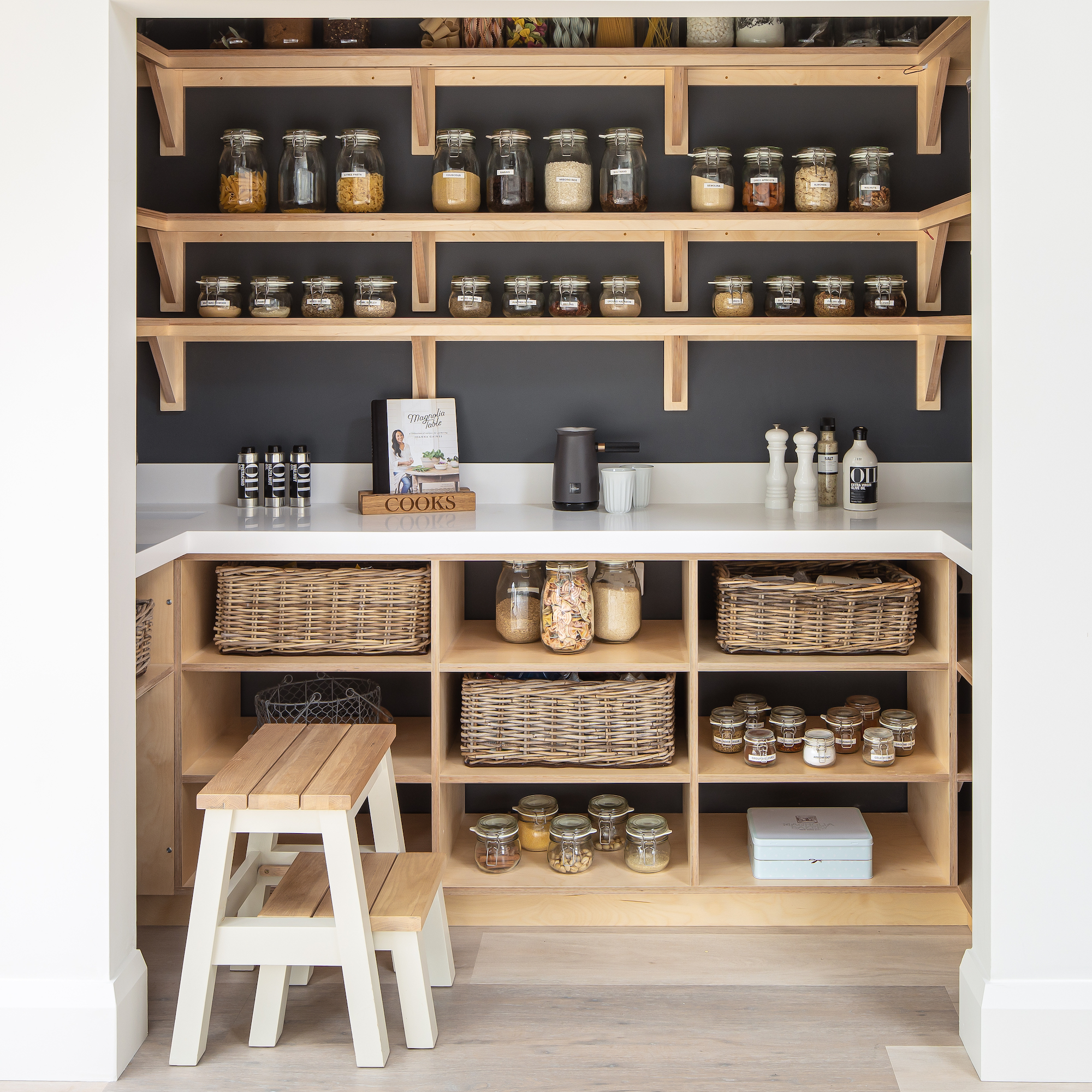
Francesca Harris’, interior designer and founder of Francesca Harris Design, top tip is to use ‘stackable, square containers. Jars may look nicer, but they aren't a very efficient use of your space.’
‘Tall and narrow containers take up less shelf space too’ adds Rob Falconer, head of range at ProCook.
You should also opt for a spice rack instead of lots of jars to store your seasonings. Spice racks come in all shapes and sizes - some suitable for drawers, others for high shelves. ‘You might even be able to have one fitted inside of your pantry cupboard doors.’ says Harris.
6. Label shelves and containers
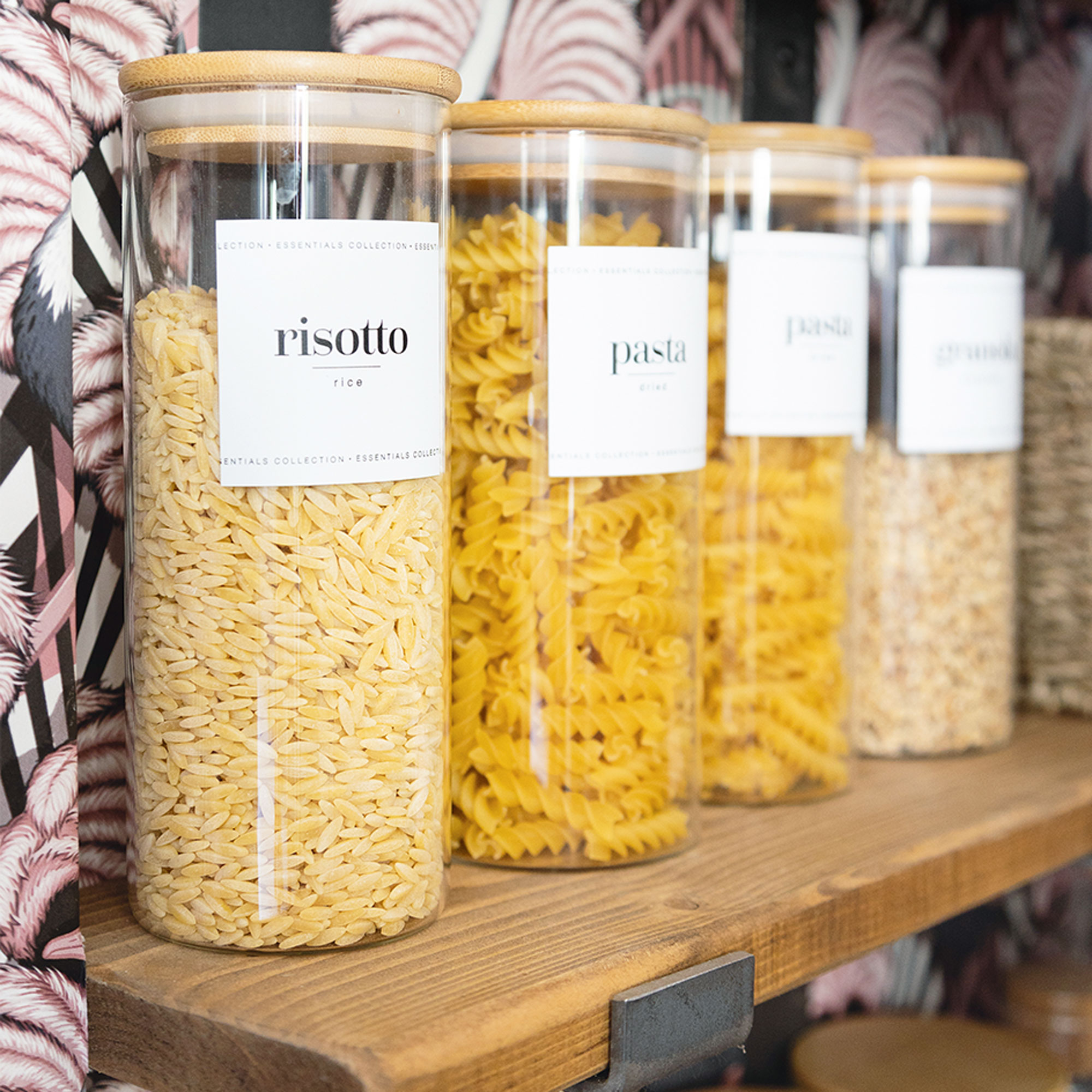
Kelly Collins, head of creative at Swyft recommends labelling shelves and containers so you know where everything is. As well as knowing what product is which, labelling is also a great way of keeping track of expiration dates.
Especially if you’ve decided to transfer foods into transparent containers, adding a removable label with the expiration date to the bottom or side of the container will help you keep track of when you need to refill and restock.
7. Rotate items when you restock
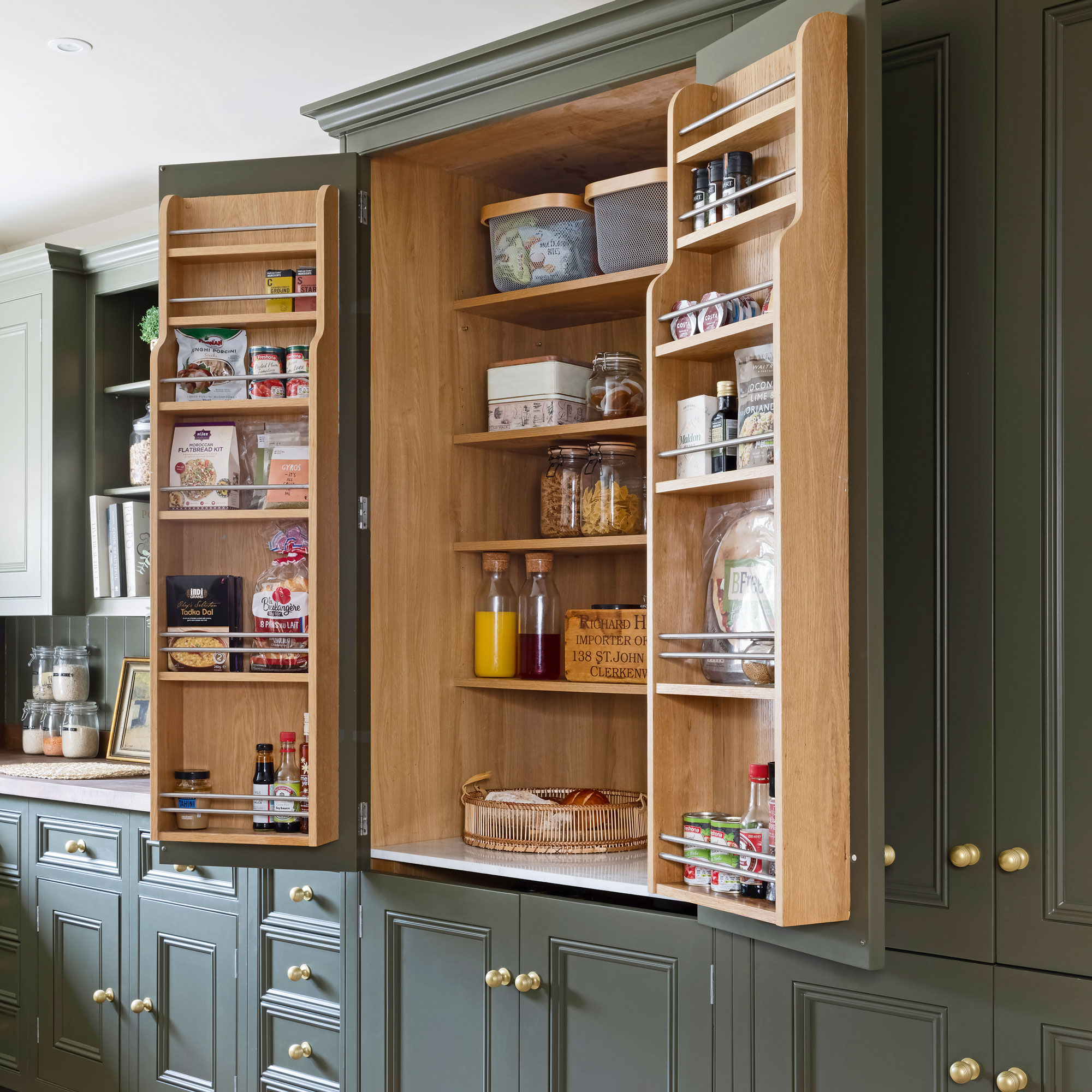
You can organise your pantry and have it neat and tidy, but if you don’t continue to implement an organised routine it won’t be long before your pantry is back to disorder and chaos.
To maintain an organised pantry, you should rotate your stock every time you do a food shop. Decant and bring old items to the front of your pantry, and place new items at the back.
8. Add personal touches
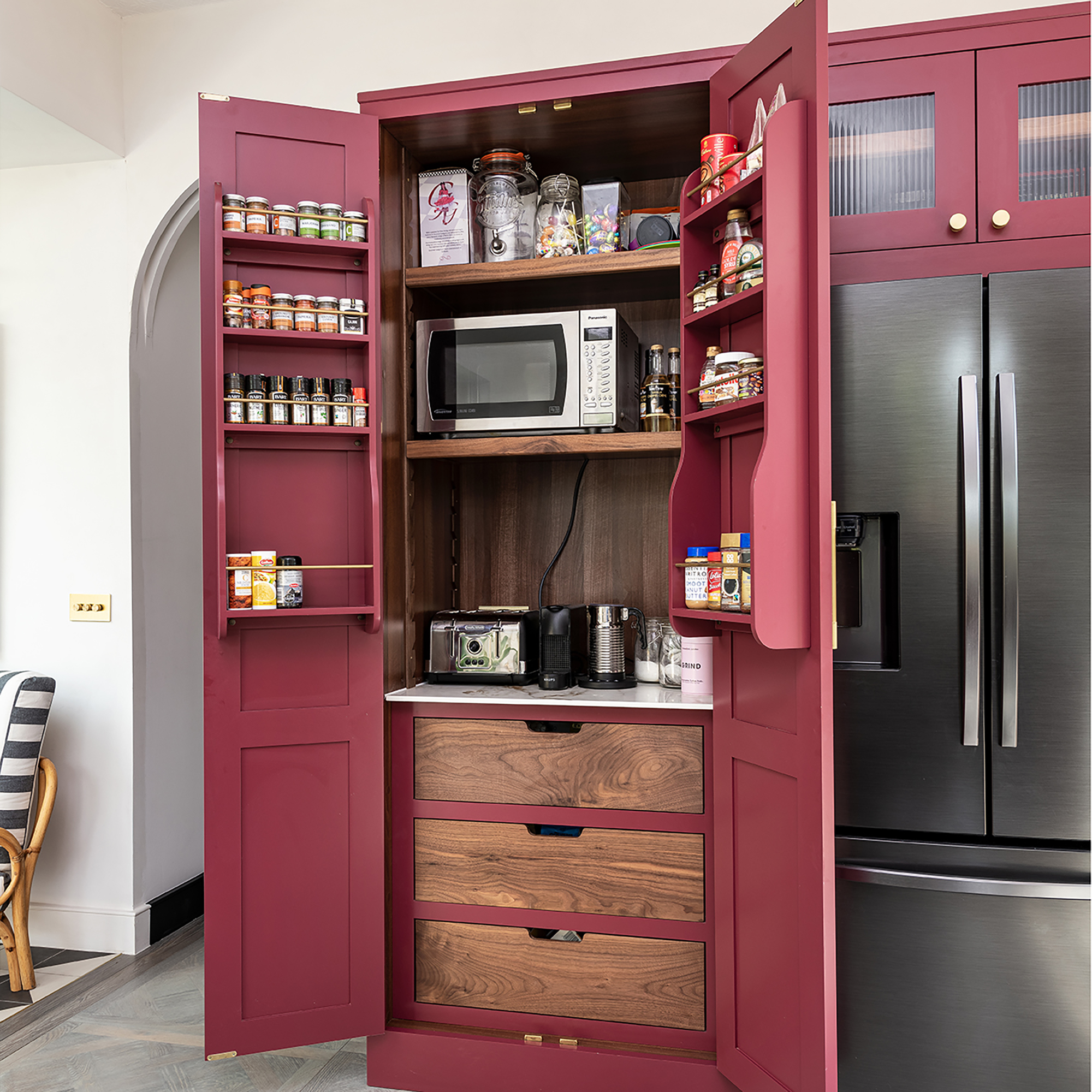
Organising your pantry doesn't have to be boring. Yes, acrylic transparent containers are right on-trend, but if you’d prefer colourful baskets, handwritten labels or even painting the inside of your pantry statement shade then choose what's right for you. Personalising your pantry will make it more enjoyable to use, and easier to keep organised.
Interior designer Rebecca Fisher recommends using your pantry space to elevate your everyday experience. ‘If you have the space, create a mini breakfast station on a worktop level shelf’, or organise your favourite snacks and turn something a tad boring into a treat.
FAQs
What should you store in a pantry?
Your pantry is generally out of sight, which means it can easily become a dumping ground for anything and everything. Which is why ‘it’s important to know what to keep in it’ says Francesca Harris. ‘You should focus on storing the majority of your dried foods in the pantry, and then if you have space left over, a pantry is the perfect place for appliances such as kitchen mixers, blenders and food processors.’
What features should a pantry include?
A pantry has the potential to hold many different types of items - from dried foods to appliances, as mentioned above. In order to organise your items effectively, there are certain features that can help. ‘For example, stacking tins, cans and jars in acrylic containers stored on shelves mean you see what you have. Decantering rice, cereals, pasta, and flours into clear containers will keep them fresh, organised and visible.’ says Francesca Harris.
How to maximise storage in a small kitchen
Not all kitchens come with a dedicated pantry space. Tom Howley, Creative Design Director at the eponymous kitchen company says, ‘If you don’t have large areas to play with, incorporate slimmer, tall pantry cupboards around the room. Position these narrower designs in key areas of your kitchen, for example, frequently used appliances and ingredients in main prep zones and dishware or glasses close to social spaces.’
Louise Oliphant is the Ecommerce Writer at Ideal Home. Bringing a bunch of bedding expertise from her previous role in PR, Louise is eager to share useful sleep content, including what to look for, when and where to buy the best bedroom products. Think everything from gorgeous luxury bedding, to duvets that’ll keep you at optimum temperature all night long. Aside from reviews to help get essential shut eye, Louise also writes shopping content for homeware items that’ll add a decorative touch to your space.
-
 Wood drenching is the calming new twist on the colour drenching trend – here’s how to make the look work in your home
Wood drenching is the calming new twist on the colour drenching trend – here’s how to make the look work in your homeIt’s easier than ever to embrace natural materials
By Maddie Balcombe
-
 Aldi is launching a £200 day bed with four different features - its sleek design is suited to the whole family
Aldi is launching a £200 day bed with four different features - its sleek design is suited to the whole familyYou don't want to miss out on this Specialbuy
By Kezia Reynolds
-
 How to set up a drip watering system that saves water and a lot of effort
How to set up a drip watering system that saves water and a lot of effortKeep your plants hydrated (and your water bill down) with this clever garden watering solution
By Natalie Osborn